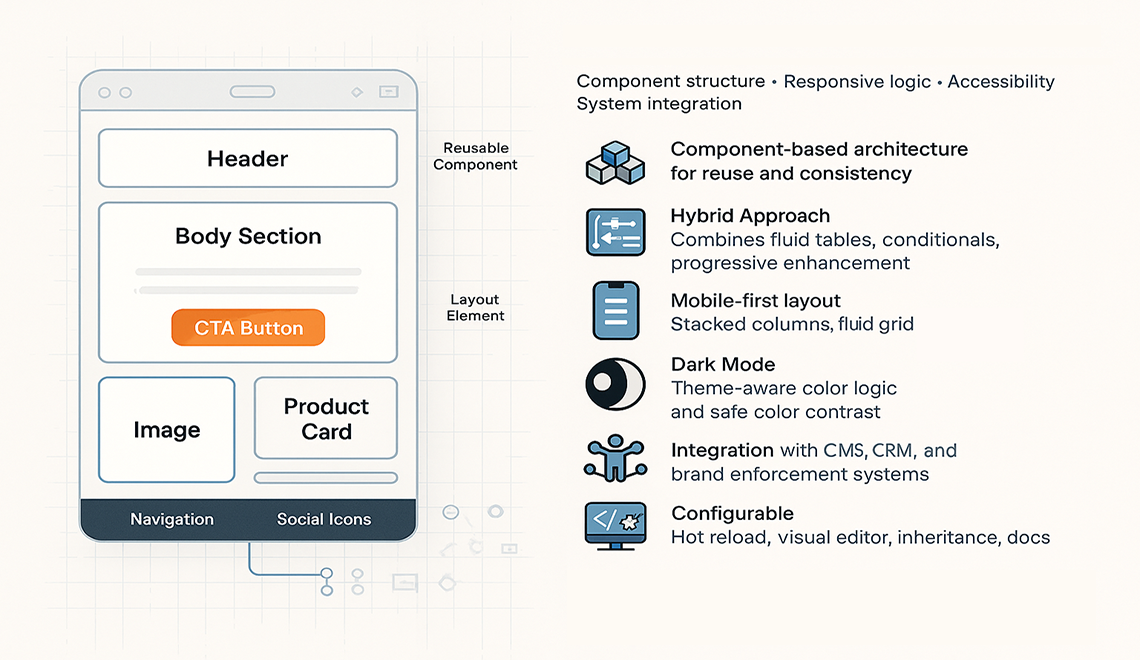


In today's digital landscape, email marketing remains one of the most effective corporate communication channels. However, creating responsive, accessible, and functional HTML email templates can be challenging, especially when IT teams must balance efficiency with flexibility. This article analyzes the key features that a modern email template framework should possess to meet the demands of contemporary corporate environments.
A contemporary email template framework must be built on a component-based architecture that enables modularity, code simplicity, and reusability.
The foundation of a modern framework is still the Hybrid Approach. The methodology that combines the best features of different email coding methods. This hybrid methodology intelligently combines:
This allows developers to write code once, while the framework automatically generates optimal versions for all major email clients.
The example component structure should include headers, content sections, call-to-action elements, footers, navigation, product cards, and social media elements. It should also provide components for layout and basic content elements.
Statistics clearly indicate that over 60% of emails are opened on mobile devices. The framework must therefore natively support responsive design with a mobile-first approach while ensuring smooth adaptation to different screen sizes.
Thanks to the Hybrid Approach, responsiveness doesn't rely solely on media queries (which aren't supported by all clients) but utilizes an intelligent combination of techniques:
The framework should automatically generate media queries and provide fallbacks for older email clients that don't support modern CSS standards.
Dark mode has become standard in modern applications and operating systems. Email template frameworks must natively support automatic adaptation to dark themes, ensuring optimal user experience regardless of user preferences.
Background images in emails are notoriously difficult to implement due to rendering differences between email clients. A modern framework must solve these issues through:
Accessibility shouldn't be an add-on but a fundamental part of the framework. WCAG 2.1 AA compliance should be ensured at the framework level, not left to developers.
A contemporary framework must prioritize developer experience, offering intuitive APIs and development tools.
The framework must be flexible enough to adapt to diverse organizational requirements while maintaining ease of use.
A modern framework cannot function in isolation. It must seamlessly integrate with existing corporate systems.
Kinetic email represents the future of interactive experiences in the inbox. The framework must support advanced functionalities without compromising compatibility.
The framework must provide elegant fallbacks for email clients not supporting advanced functionalities, ensuring basic functionality remains available to all recipients.
A modern email template framework for corporate environments must be much more than just an HTML generation tool. It should constitute a comprehensive platform that combines ease of use, advanced technical functionalities, and solid security and accessibility foundations.
The key success factor is finding the balance between power and simplicity. The framework must offer advanced capabilities for experienced developers while remaining accessible to non-technical users. Only such an approach will allow organizations to fully utilize email marketing potential in today's competitive business environment.
What's been your biggest nightmare in scaling email across enterprise systems?
Curious how others handle accessibility and mobile-first without breaking in Outlook.